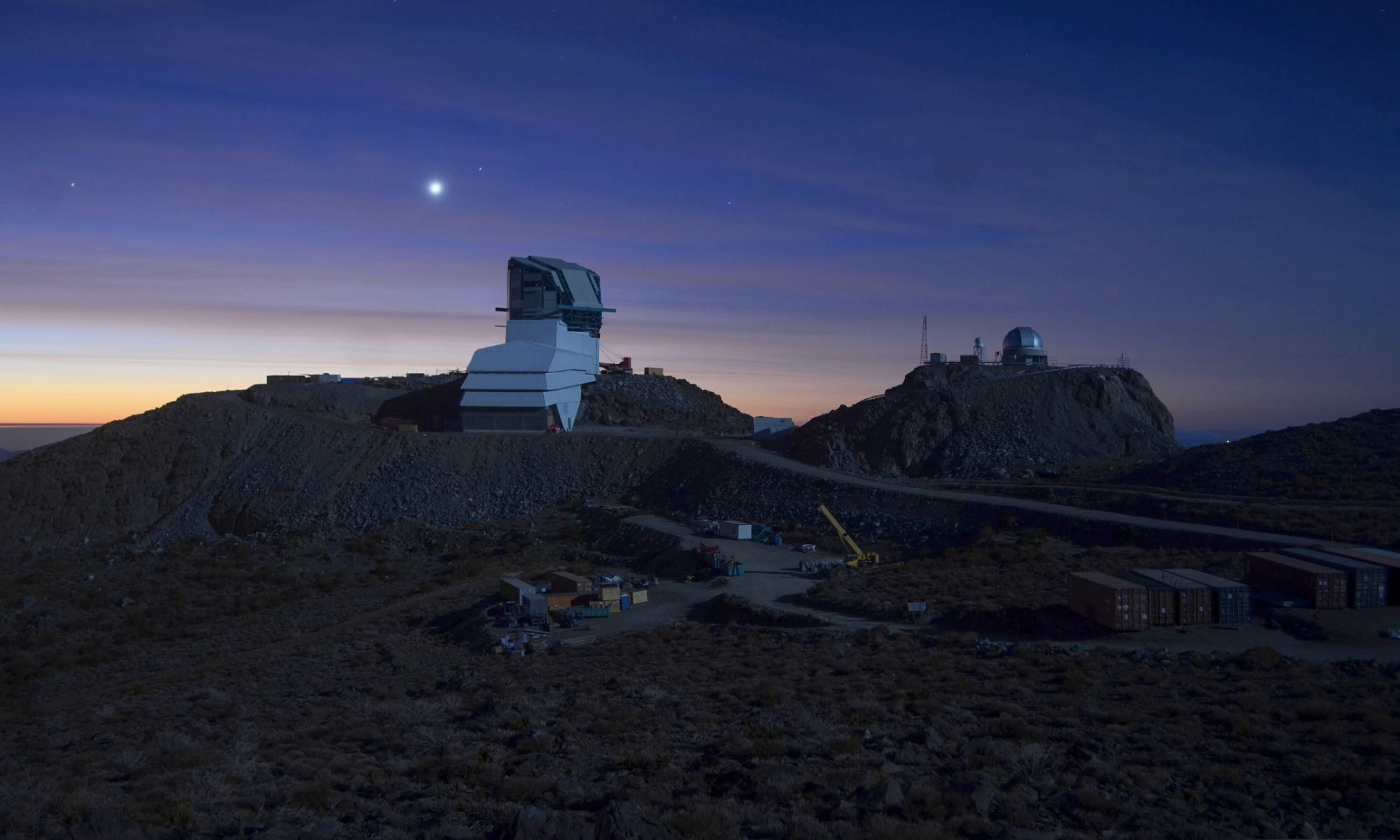Two of the most important telescopes being constructed at the moment are Vera C. Rubin and Nancy Grace Roman. Each has the capability of transforming our understanding of the universe, but as a recent paper on the arxiv shows, they will be even more transformative when they work together.
Originally known as the Large Synoptic Survey Telescope (LSST), Rubin Observatory will be a ground-based sky survey telescope. It will map the entire heavens visible from its location every few nights, giving us an unprecedented view of transient objects such as supernovae, variable stars, and stellar flares. Most survey telescopes sacrifice resolution for speed, but Rubin will use a new optical mirror design that will capture high-resolution images with nearly 50 times the apparent area of the Moon.
The Roman telescope on the other hand will be a space-based observatory. Originally named the Wide-Field Infrared Survey Telescope (WFIRST), Roman will study dark energy and discover new exoplanets through a process known as microlensing. Like Rubin, the Roman telescope will have a wide view of the sky, covering roughly the area of the Moon in a single image. In comparison, a single Hubble Space telescope is only about a fiftieth of a Moon-width. Roman will also observe the sky at even higher resolutions than Rubin, in both visible and infrared.
This new paper outlines how Rubin and Roman could be used together for specific research. For example, variable stars known as Cepheids vary in brightness in proportion to their overall luminosity. They are used as part of the cosmic distance ladder. As Rubin sky surveys find Cepheids, Roman can be used to determine their distance and motion, thus making Cepheid distance measurements more accurate. As Roman discovers exoplanets, Rubin can add spectroscopic observations to better understand things such as the metallicity of exoplanet stars. And there will be unexpected transient events where having two powerful telescopes will be extremely useful in characterizing events.

The astronomers for which these telescopes are named never directly collaborated in their research. Vera Rubin focused on the rotational motion of galaxies. She identified the galactic rotation problem, where outer stars have velocities similar to those of central stars, which was the foundational evidence for dark matter. Nancy Roman studied the spectra and motion of stars and discovered that stars of similar mass and type could have vastly different ages, which laid the groundwork for our understanding of stellar and galactic evolution. She also worked for NASA and was deeply involved in the development of the Hubble Space Telescope.
Both the Rubin and Roman telescopes have a heavy mantle to carry in their names. They will continue the work these women started, taking our understanding beyond the shores of knowledge two astronomers gave us. And by collaborating in spirit and in name, Vera C. Rubin and Nancy Grace Roman will inspire astronomers all across the world to make amazing discoveries of their own.
Reference: Street, R.A., et al. “Maximizing science return by coordinating the survey strategies of Roman with Rubin, and other major facilities.” arxiv preprint arXiv:2306.13792 (2023).

